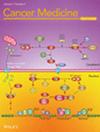C-Reactive Protein to Lymphocyte Ratio (CLR) and Lactate Dehydrogenase to Albumin Ratio (LAR) as Prognostic Biomarkers in Acral Melanoma: Association With Tertiary Lymphoid Structures and Immune Cell Infiltration
Abstract
Objective
To investigate the correlation between peripheral blood CRP-to-lymphocyte ratio (CLR) and lactate dehydrogenase-to-albumin ratio (LAR) levels, prognosis, and the tumor microenvironment (TME) in patients with acral melanoma (AM), with a focus on tertiary lymphoid structures (TLS) and immune cell infiltration.
Methods
A retrospective cohort of 36 patients with acral melanoma was included. Clinical data and hematological parameters were collected. The maturity of TLS, the proportion of immune cells, and their spatial distribution within the TME were assessed using H&E staining and multiplex immunofluorescence. Kaplan–Meier survival curves and Cox regression models were employed to examine the association between these indicators and patient survival. Non-parametric tests and Spearman's correlation analysis were used to compare CLR and LAR levels across patients with different TLS maturity and immune infiltration statuses.
Results
Elevated levels of CLR and LAR in the blood are associated with poorer prognosis in patients with acral melanoma. The levels of CLR and LAR vary across patients with TLS of different maturities, and these levels decrease as TLS maturity increases. Additionally, CLR and LAR levels are significantly correlated with the proportions of CD4+ and CD8+ T cells in TME, with higher levels of CLR and LAR being linked to reduced immune cell infiltration.
Conclusion
Elevated CLR and LAR levels are associated with poorer prognosis in AM patients, and this relationship is closely linked to the maturity of TLS and the extent of immune cell infiltration within the TME.


 求助内容:
求助内容: 应助结果提醒方式:
应助结果提醒方式:


